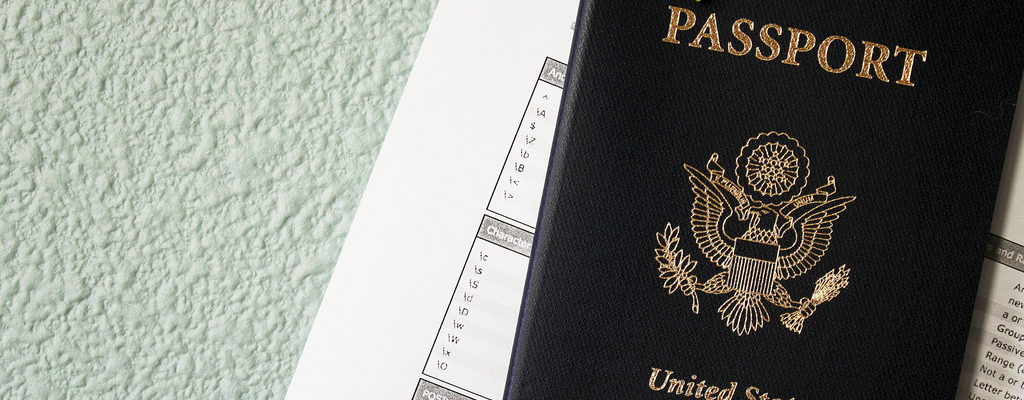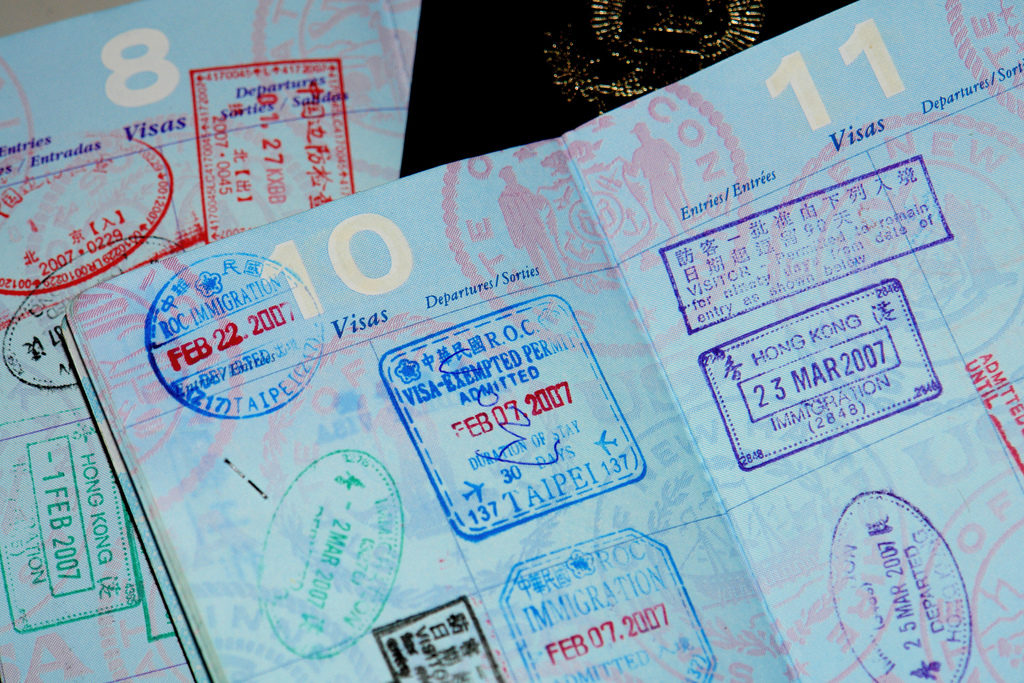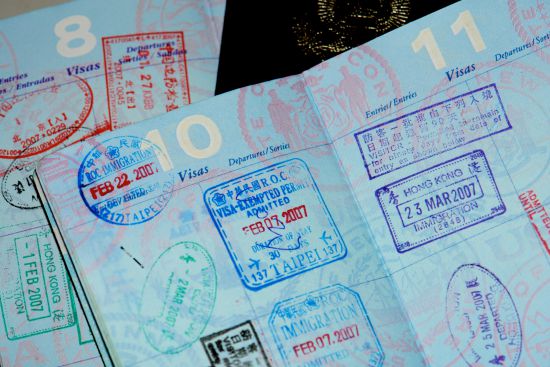A passport is an essential item for anyone who wants to travel overseas. It allows you to wander the world, and to keep a record – all those beautiful stamps – of your journeys abroad. But, because of it’s high value, it’s also a liability. And no one wants to go through the hassle of replacing a lost passport.
With that in mind, here are some passport safety tips. Follow them, and you’ll be much more relaxed and focused on enjoying your trip.
During the trip planning stage
Applying for and renewing your passport
If you already have a passport, make sure that it’s valid for at least six months while you travel. If you don’t have one, apply early. It can take a while to receive it.
Note that as of November 1st, 2016, customers applying for or renewing their passport must remove their glasses for their passport photo. Don’t worry if you have glasses on in your current passport photo, just keep this in mind when you renew it.
Also, on a related subject, when planning your trip, make sure your health insurance covers you while overseas. Consider supplemental travel insurance that includes medical evacuation. If you need it, you will be glad you have it! Medical evacuation can cost in the hundreds of thousands of dollars and could mean the difference between life and death in an emergency.
Before you leave
Learn and enroll
Head to travel.state.gov to learn about travel regulations, local laws and the customs of your destination.
Then, consider enrolling in the STEP (Smart Traveler Enrollment) program. The Smart Traveler Enrollment Program (STEP) is a free service for U.S. citizens and nationals traveling abroad to enroll their trip with the nearest U.S. Embassy or Consulate.
Benefits of enrolling in the STEP program:
- It will help the U.S. Embassy contact you in an emergency – natural disaster, civil unrest, or a family emergency.
- It will help your family and friends get in touch with you in an emergency.
- And you’ll receive travel and safety updates from the Embassy while abroad, helping you make important decisions about your travel plans.
Leave copies behind
Leave paper copies of the photo and signature page of your passport with family or a close friend at home. That way, if you lose your passport, you’ll have a way to get a copy with a quick phone call or email.
Also, copy the photo and signature pages of your passport and then scan and upload them to your cloud or a flash drive, and/or email them to yourself.
While you are traveling
Carry copies
Aside from airport security checkpoints and border crossings, you won’t need to show your actual passport book to everyone who asks to see it. A copy will usually work. Having a copy will also help speed up the replacement process if something should happen to your passport
While in transit between your home and hotels, carry two paper copies of your passport, one in your day bag, one in your main luggage or with the rest of your non-passport travel documents.
Carry copies of your passport ID page and foreign visa (if you have one) with you at all times. Keep them separate from your passport while in transit to your destination.
Lock things up
It can be a real annoyance to lose your passport, especially while you are traveling. To keep this valuable item safe, keep it in the safe. Most hotel rooms have them, and they are easy to operate. Keep your valuables locked up while you go out and explore.
Granted, locking things up doesn’t guarantee they will be safe, however in more than thirty years of travel I’ve never had a problem. If you you have any doubts about the trustworthiness of the people who have access to the safe, keep your passport and valuables hidden in a locked suitcase in your room, and if you have two bags, lock these items in the larger one. It would be hard for a thief to escape notice lugging a large suitcase out of your hotel.
Keep it with you
You can of course, keep your passport with you at all times while traveling. It’s reassuring to know it’s right there. But this puts a risk of loss by either theft or being absentminded.
If you choose this option, keep it hidden beneath your clothes, preferably in something that is water-resistant, such as a money belt or compartment under your clothing that closes securely. Humidity can cause you to sweat and wrinkle its pages. I don’t recommend keeping it your pocket. It’s too easy for a pickpocket to reach that way.
For most people, this option is the least desirable, as it can be uncomfortable. Each person has to decide which option will make them feel the most secure.
Despite all I’ve said here, with a little bit of care, you should make it through your trip and home, passport safely in hand. Just relax, but be smart. And if your passport is lost of stolen you should report it immediately to the nearest embassy or consulate.






